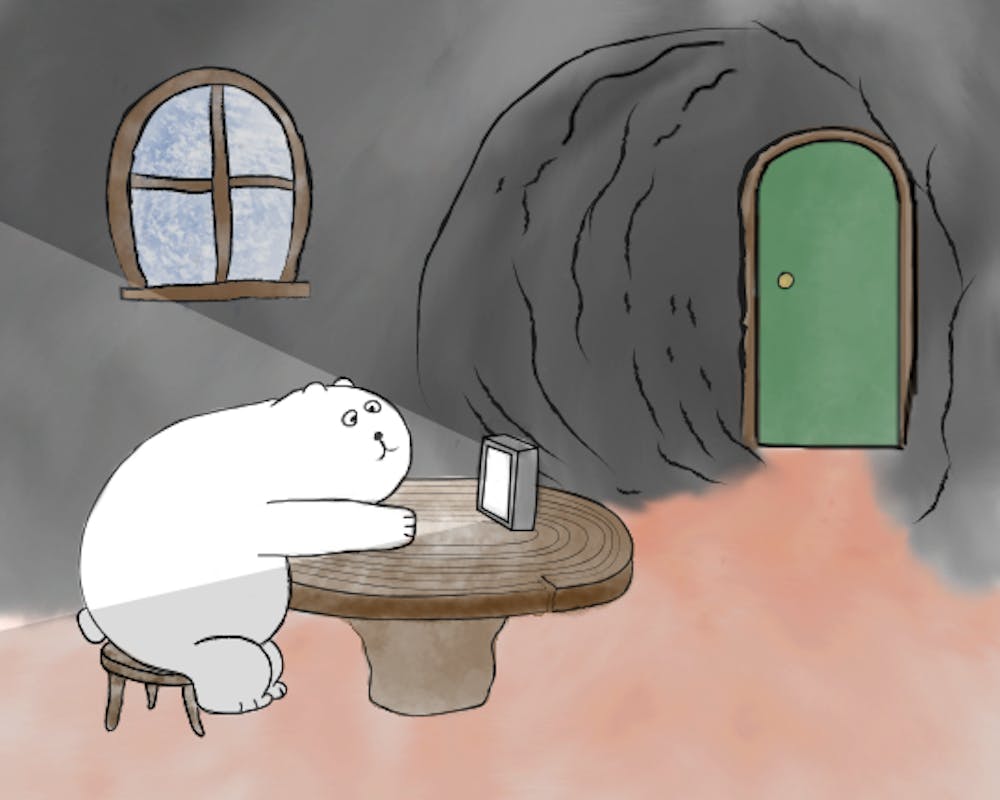For some, the fall and winter months are a time — after exams — to relax, celebrate the festiveness and enjoy the varied pumpkin-spice flavored food and drinks. For those with seasonal depression, however, it can be one of the most difficult times of the year.
Depression with a seasonal pattern, previously known as seasonal affective disorder (SAD), has only one defining characteristic as opposed to other forms of depression, and it’s right there in the name.
Catherine Andersen is a graduate student studying clinical psychology and the assistant clinic director of the Psychology and Social Work Clinic at Ohio University.
“(With seasonal depression), it’s still the same things that we’re looking out for,” Andersen said. “The two kind of hallmark characteristics are a depressed mood, low mood, or loss of interest in either pleasurable activities that were once enjoyable, or a loss of interest in kind of daily activities.”
Andersen said other symptoms of depression include extreme changes in sleep or eating habits, inability to focus, concerned observations from others and suicidal thoughts or speech.
People without backgrounds in psychology seem to have differing ideas on why coping with depression may be more difficult during different times of year.
“I definitely think we’re affected by our environment,” Madison Thomas, a junior studying English, said. “And so, especially the sun. I mean, plants aren’t the only thing that benefits from that. And so when there’s a lack of sunlight, and it’s been gloomier weather, people aren’t going out as much. Maybe they aren’t socializing as much. Less sunlight, bodies are affected by that.”
“It’s colder,” Matt Downing, a sophomore studying data analytics in sports management, said. “It’s harder to get up and stuff. It’s harder to do stuff when you’ve gotta walk, and it’s like 20 degrees.”
Andersen said potential causes for seasonal depression include insufficient Vitamin D and thyroid dysfunction due to changes in the weather. However, she also agreed that social engagements, or a lack thereof, because of the colder weather can certainly have an impact on seasonal depression.
Andersen also said it’s important to distinguish between common sadness and actual depression, urging those without depression to not jump to any conclusions about those with the disorder.
“I think it’s really important to keep in mind that it’s really tough to be feeling that way all the time,” Andersen said. “And it’s not just a matter of, ‘Feel better.’ There are other things that need to happen in order for people to really feel better and come out of depression.”
Andersen said there is a wide variety of options for people with seasonal depression to get help. In terms of preventative care, careful moderation of substance use, adequate exercise and social support are all important to maintain.
If symptoms of depression persist, Andersen suggests group or individual therapy, medication or light box therapy as potential methods of treatment — with approval from a professional. Light box therapy is a popular option for some people with seasonal depression, as the bright light emanating from the box simulates sunlight, providing some of the health benefits that an actual sunny day would.
Thomas knows people who don’t have official diagnoses of seasonal depression, but who often comment about feeling more lethargic or struggling more with depression during the winter months. One person Thomas mentioned actually bought a light box.
“I’ve had one person talk about how she bought, I actually think it’s supposed to be a plant light, but she bought it for herself,” Thomas said. “And she actually really benefits from it, so I feel like I would recommend that, because I feel like I’d do that, even.”
Despite that form of therapy’s popularity and relative convenience, only costing about $20 on Amazon and requiring no official diagnosis, Andersen warns against using one without first talking to a mental health professional or provider.
“There are different types of medications that can interact with that light therapy in a really not-so-good way, and there are other kinds of risks and things that you might want to consider,” Andersen said. “But for students here, Counseling and Psychological Services does offer free services, and they do offer light box therapy.”
Among all of those forms of treatment, many methods to prevent or combat any form of depression come from knowing one’s own needs, wants and limits.
“It’s really easy, particularly in the winter months, particularly for students and staff at OU, to get caught up in the hustle and bustle, and there’s no time for eating and sleeping,” Andersen said. “Those are some things that are going to be really impactful.”






